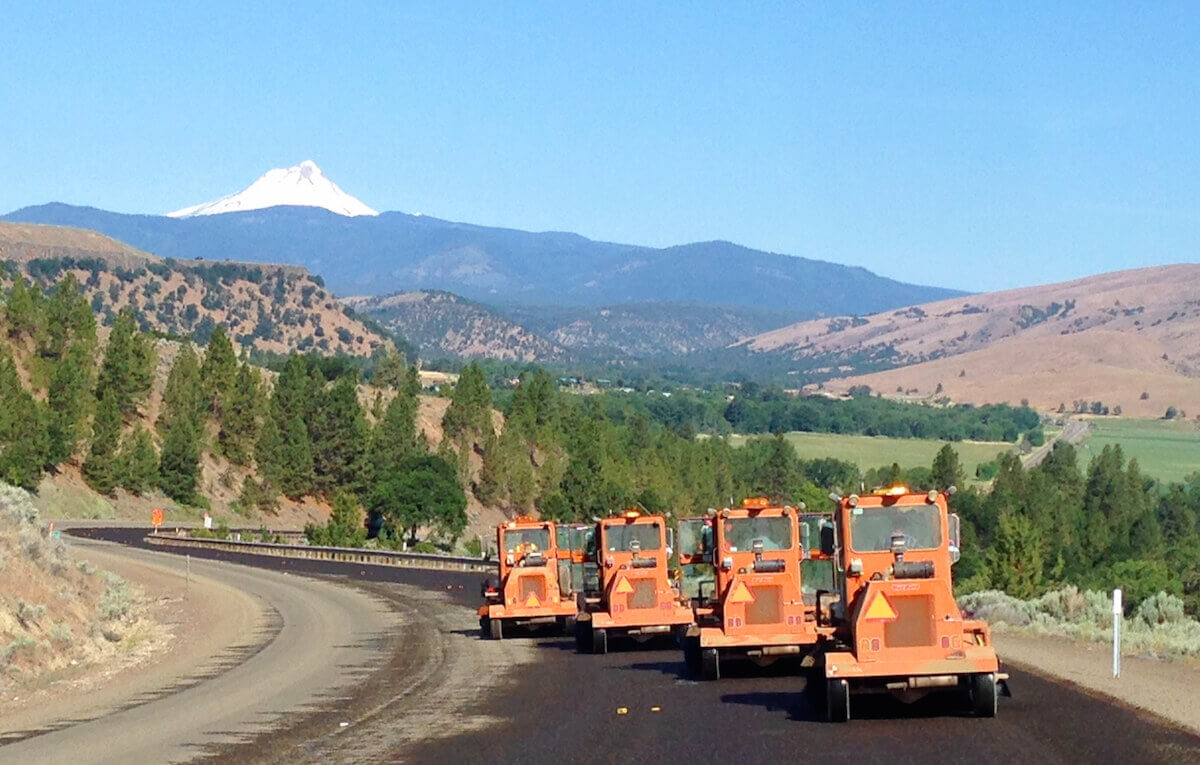
How should we pay for the roads we use?
May 11, 2015 | Maureen Bock, Michelle Godfrey, & Tom Fuller
Facebook Post: “According to MyOReGO’s own web site, ‘freight trucks loaded to the maximum legal weight do about 8,000 times more road damage than standard passenger cars.’ So if we’re accounting for road damage, I guess we need to take the $0.16 these large trucks pay (maximum rate I can find on http://www.oregon.gov/ODOT/MCT/pages/2010changes.aspx#Weight_Mile_Tax_Rates) and divide by 8000, you know, to be ‘fair’ and all. That’s 2 one-thousandths of a cent by my calculations.”
Response: For more than 70 years, Oregon has based highway financing on a cost responsibility model. In 1999 the principle was ratified in our constitution:
“Revenues…that are generated by taxes or excises imposed by the state shall be generated in a manner than ensures that the share of revenues paid for the use of light vehicles, including cars, and the revenues paid for the use of heavy vehicles, including trucks, is fair and proportionate to the costs incurred for the highway system because of each class of vehicle. The Legislative Assembly shall provide for a biennial review and, if necessary, adjustment, of revenue sources to ensure fairness and proportionality.”
Cost responsibility is simply the idea that you pay for what you use. Think of it like a utility bill. When you get your bill, you see a charge for what portion of utility (water, electricity) you consumed. You also see a charge for maintaining the infrastructure that delivered that utility. And there may be other local fees and credits that are assessed to pay for public investments related to the utility.
Well, roads are assets just like utility infrastructure. People who use asset-based services such as utilities are charged for their consumption of that utility. Part of the utility payment is used to maintain the infrastructure. The assessment of utility costs is based on a cost allocation formula.
For highway infrastructure, there are currently three major sources of highway revenues: vehicle registration fees, motor vehicle fuel taxes (primarily the gasoline tax), and motor carrier fees (primarily the weight-mile tax, paid by the big trucks). Each tax is evaluated and adjusted according to the cost responsibility principle—collect a fair share of revenue from each type of highway user.
The increasing fuel efficiency of cars (light duty vehicles) is throwing a new variable into the mix. The cost allocation formula was simpler when all cars got about the same mileage. That’s no longer the case. We are challenged now to adjust either fuel taxes (which don’t apply equally to all, depending on the vehicle’s mpg rating) or vehicle registration fees in a new way that will place the appropriate cost responsibility on the appropriate road user.
The road usage charge provides the new mechanism we need to account for efficient vehicle owners who are paying less and less fuels tax. If mandated, it will provide another way to fine tune the mix to ensure everyone pays their fair share of the roads they use.
One thought on “How should we pay for the roads we use?”
Leave a Reply
Recent Posts
July 20, 2018
OReGO is three years old this month and we are pinching ourselves thinking how far we’ve come since our launch […]
April 9, 2018
Do you remember the roads you drove last week? The bridges you crossed? The number of trips you took on […]
January 25, 2018
If you followed the 2017 legislative session, you know that Oregon lawmakers passed a new transportation funding package called “Keep […]

Stephan Belding says:
Miles travelled is a good start but the weight of the vehicle needs to be factored in as well. Take a Chevrolet 4WD Suburban (5896 lbs), a Ford Explorer SUV (4,443 lbs), a Toyota Prius (3,010 lbs), and a 2014 Ridley Helium bicycle (14 lbs). Which vehicles do the most damage to the roads? The heavier ones of course. Weight mile tax could very well bring in more revenue just in the Portland metro area than the gas tax brings to the whole state. It is a win-win for everyone as the heavier vehicles that cause the greater damage pay more for maintenance and repairs. If one does not want to pay the higher cost, then they should acquire a smaller vehicle which results in less damage to the roads. Except, of course, the automobile manufacturers who make a tidy profit on their large vehicles.